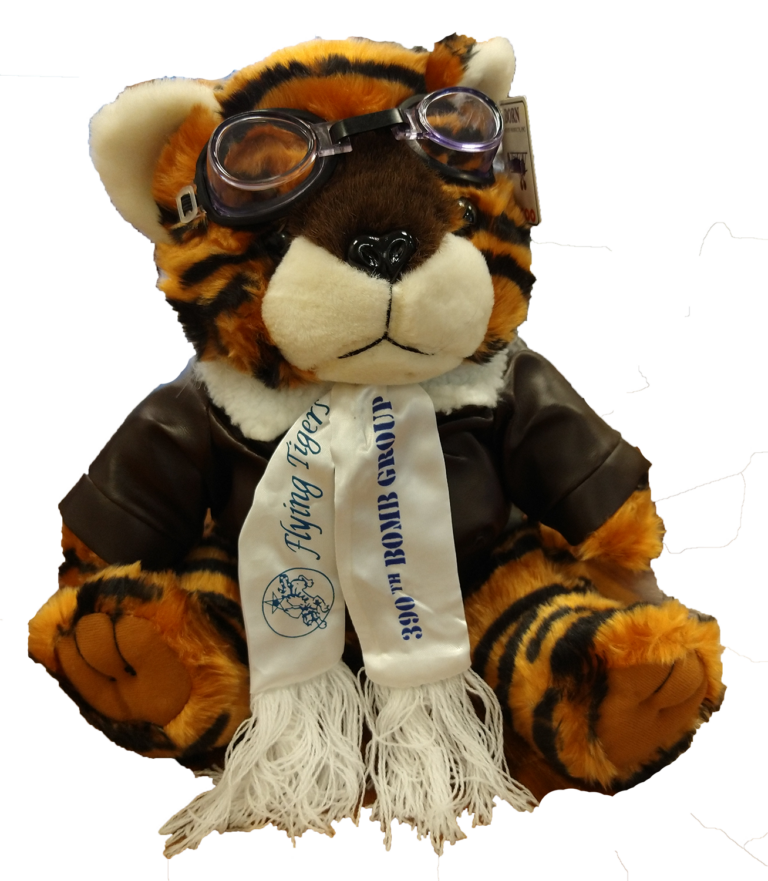“We knew that the pattern of our lives was about to change, and we were to find that it takes a great deal of sweat and worry, and fear, and conquering of fear, just as it takes a broadening of sense of values and humor, and an awakening to responsibility… (in the) shouldering of a king-sized burden.”
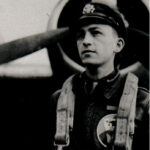
What was aerial combat like?
A Physical & Mental Strain
The bomber boys came from every corner of America with many never even having seen or set foot in an airplane before the war. With just about a year of training between enlistment to deployment in Framlingham and then their first combat flights, the tasks they faced were monumental and the odds were not in their favor.
390th veteran Colonel Richard Bushong has pointed out, their youth was actually a good thing; if they had really understood the danger, they might never have boarded the planes at all!
The boys knew that their chances of being killed or becoming a POW were greater than their chances of coming home. In the first months the 390th was active, the survival rate for missions was just 50%.
The B-17’s cabins were not pressurized and temperatures were colder than 30 degrees below zero. Wearing imperfect equipment exposed bombers boys to frostbite, electric shock and hypoxia.
Fliers were subjected to the greatest physical, emotional
and psychological tests ever experienced by humankind.
The combined technologies of the B-17 and the Norden Bombsite allowed the Mighty Eighth to eventually turn the tides of WWII in favor of the Allies. Yet, the success came at a great price: 8th Army Air Force losses were by far the most significant of any branch of the military at that time.
One Experience of High Altitude Bombing
The Raid on Münster
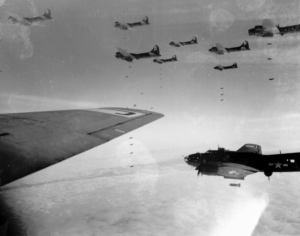 The 390th Bomb Group participated in some of the greatest air battles in WWII including Schweinfurt, D-Day and the Raid on Berlin. Among these was the raid on Münster on October 10, 1943. Battling the greatest concentration of enemy fighters ever encountered on an 8th Army Air Force mission—over 600 German aircraft—the men of the 390th shot down sixty-two German planes while losing eight of their own eighteen aircraft that day. The crew of Cabin in the Sky described the raid as the “Battle of Britain.” Dramatic and powerful, the battle was finished in just thirty-four minutes.
The 390th Bomb Group participated in some of the greatest air battles in WWII including Schweinfurt, D-Day and the Raid on Berlin. Among these was the raid on Münster on October 10, 1943. Battling the greatest concentration of enemy fighters ever encountered on an 8th Army Air Force mission—over 600 German aircraft—the men of the 390th shot down sixty-two German planes while losing eight of their own eighteen aircraft that day. The crew of Cabin in the Sky described the raid as the “Battle of Britain.” Dramatic and powerful, the battle was finished in just thirty-four minutes.
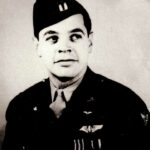 Bombardier Douglas Gordon-Forbes witnessed a plane to his left break in half. He watched as its pieces slammed into another plane, making both planes fall away in a column of smoke. Seconds later, a plane on his right blew up in a great red flash. All around him, the sky filled with the debris of men, parachutes, and airplanes.
Bombardier Douglas Gordon-Forbes witnessed a plane to his left break in half. He watched as its pieces slammed into another plane, making both planes fall away in a column of smoke. Seconds later, a plane on his right blew up in a great red flash. All around him, the sky filled with the debris of men, parachutes, and airplanes.
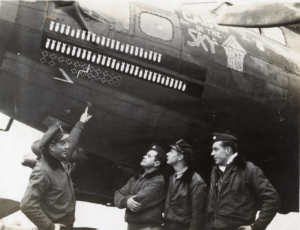 After battling for what seemed like hours, the ammunition was almost exhausted and shell casings were piled up a foot deep on the floor. Still, the German fighters kept coming in swarms. The ball turret gunner waved his empty guns, hoping to trick the enemy.
After battling for what seemed like hours, the ammunition was almost exhausted and shell casings were piled up a foot deep on the floor. Still, the German fighters kept coming in swarms. The ball turret gunner waved his empty guns, hoping to trick the enemy.
Tail gunner Jacob Goldberg reported to pilot Robert D. Brown “We’re all alone up here!” They had lost five planes in just ten minutes. The bomb group in formation behind them had literally been blown from the sky.
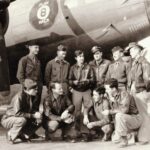 Bombardier Dean Ferris saved his plane from doom when he jumped from his guns and put out a fire with his bare hands. Moments later, a German rocket sheared off twelve feet of the right wing. With burnt hands, Ferris aided his pilot and copilot to hold the plane on course. The pilot, Captain Bill Cabral, brought the plane back to find his airfield fogged in. With the gas supply almost gone, Cabral brought the battered plane in for a crash landing that his crew called “sensational”.
Bombardier Dean Ferris saved his plane from doom when he jumped from his guns and put out a fire with his bare hands. Moments later, a German rocket sheared off twelve feet of the right wing. With burnt hands, Ferris aided his pilot and copilot to hold the plane on course. The pilot, Captain Bill Cabral, brought the plane back to find his airfield fogged in. With the gas supply almost gone, Cabral brought the battered plane in for a crash landing that his crew called “sensational”.
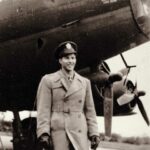 Pilot Paul Vance used a rubber interphone radio cord and a neck scarf to wrap his gaping leg wound after FLAK ripped a hole in the plane. None of his crew members knew he had been hit. He explained his decision to copilot Burgess Murdock that “it might disturb them.” Lt. Vance was barely able to maintain consciousness, but stayed composed as he directed his copilot to successfully complete the bomb run. He was later awarded the Distinguished Flying Cross for his effort.
Pilot Paul Vance used a rubber interphone radio cord and a neck scarf to wrap his gaping leg wound after FLAK ripped a hole in the plane. None of his crew members knew he had been hit. He explained his decision to copilot Burgess Murdock that “it might disturb them.” Lt. Vance was barely able to maintain consciousness, but stayed composed as he directed his copilot to successfully complete the bomb run. He was later awarded the Distinguished Flying Cross for his effort.
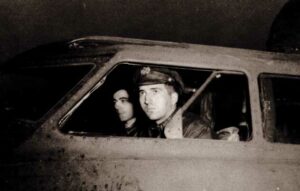 Waist gunner George Rankin saved his crew from certain death when a German rocket buzzed in through the waist window. Rankin scooped up the sputtering rocket and threw it back out the window, watching it burst in flames below. Hours later, pilot Bruce Riley (pictured) brought the plane home in a landing reminiscent of a Hollywood film. With less than two minutes of fuel left, two useless engines, and no radio aid, Riley safely landed in zero visibility “pea soup” fog.
Waist gunner George Rankin saved his crew from certain death when a German rocket buzzed in through the waist window. Rankin scooped up the sputtering rocket and threw it back out the window, watching it burst in flames below. Hours later, pilot Bruce Riley (pictured) brought the plane home in a landing reminiscent of a Hollywood film. With less than two minutes of fuel left, two useless engines, and no radio aid, Riley safely landed in zero visibility “pea soup” fog.
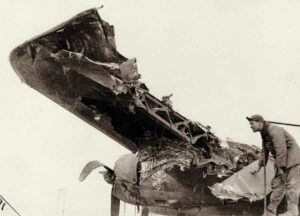
Rusty Lode sustained terrific damage just prior to reaching the target. Pilot Robert Sabel dropped out of formation, put the plane on automatic flight control, and made a lone sweep over the target before turning for home. Sabel returned to base with just minutes of fuel left. The plane had more than 750 holes in the fuselage; both wings were seriously damaged; the rudder, left aileron and flaps were shot away; and all regular controls had been severed. The crew’s return was considered a miracle by all.
Thanks to the generosity of our incredible patrons and members, the museum raised $35,000 in our 2020 "Adopt A Jacket Campaign." This money funded a brand new exhibit celebrating the prized jackets bomber boys personalized with their stories.


